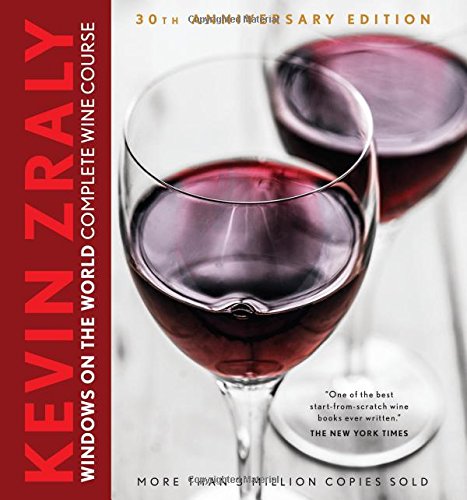What is wine?
Wine is the fermented juice of grapes
Sugar + Yeast = Alcohol + Carbon Dioxide (CO²)
The sugar is in the grape juice and the yeast is present on the grape skins and in the air
Fermentation ends when the alcohol reaches around 15%
Three major types of wine
Table wine: 8-15% alcohol
Sparkling wine: 8-12% alcohol + CO²
Fortified wine: 17-22% alcohol
(All wine fits into at least one of these categories)
(Table wine is all that concerns us today)
New World vs. Old World
New World wine regions (California, Australia, Chile) usually list the grape variety on the label
Old World wine regions (France, Italy, Spain) list the region, village or vineyard where the wine
is made, but usually not the grape
What's a vintage?
As grapes ripen, their acidity decreases while their sugar increases
Grapes are picked when they reach the sugar/acid ratio for the style of wine they’re to produce
The “Vintage” is the year that the grapes were harvested
In the Southern Hemisphere, the seasons are reversed
Northern Hemisphere harvest is between August-November
Southern Hemisphere harvest as early as January-March
The Winemaking process
Freshly picked grapes are sorted
De-stemmed and crushed
Placed into a vat with (red) or without skins (white)
Fermentation occurs (4- 20 days)
Pressed
Barreled and aged
Filtered and bottled
Image credit: Winefolly.com
What kind of grapes make wine?
The major wine grapes come from the species Vitis vinifera
Both old world (Europe) and new world (America) wine producers use Vitis vinifera
The Native American grape species (Vitis labrusca) is still grown in the U.S. but some describe
the wines as having a ‘foxy’ aroma and flavor.
The White Wines of the World
There are about 50 major white grapes used for white wine
The big three (from lightest to fullest):
Riesling
Sauvignon Blanc
Chardonnay
Where do the big three grow?
Riesling: Germany; Alsace, France; many New World regions (e.g. New York State)
Sauvignon Blanc: Loire Valley, France; Bordeaux, France; New Zealand; California
Chardonnay: Burgundy, France; California, Australia, Champagne, France
The Red Wines of the World
There are about 40 major red grapes used for red wine
The big three (from lightest to fullest):
Pinot Noir
Cabernet Sauvignon
Syrah/Shiraz
Where do the big three red grapes grow?
Pinot Noir: Burgundy, France; California; Oregon; Champagne, France; New Zealand
Cabernet Sauvignon: Bordeaux, France; California; Chile
Syrah/Shiraz: Rhône, France; Australia
Why is geography important?
All major wine regions fall between 30 and 50° latitude, north and south of the equator
It is between these two bands where various “microclimates” are found which give the correct
balance between warm and cool, sun and rain, etc. for the production of fine wine
Microclimate
Or better put, terroir, is the environmental factor affecting the quality of grapes:
Soil
Slope
Sun
Wind
Temperature
Et cetera
When the terroir, grape variety, vintage and winemaking are in sync, great wines are the result
The wines of the Old World
France, Germany, Italy and Spain all have great white and red wine traditions
The new world wine regions have tried to mimic these wines, sometimes successfully, and sometimes not
Each country has its own special regions where red and/or white wines are produced
The white wines of France
There are four major white-wine producing regions in France
Alsace
Loire
Bordeaux
Burgundy
The white wine regions of France
Alsace: Riesling, Gewurztraminer, Muscat, Pinot gris and Pinot blanc
Loire: Sauvignon Blanc, Chenin Blanc, and Melon
Bordeaux: Sémillon, Sauvignon Blanc
Burgundy: Chardonnay
The white wines of Germany
Riesling, Gewürztraminer, Müller-Thurgau and Silvaner
The white wines of Italy and Spain
Both Italy and Spain produce world class white wines but traditionally, white grapes are
planted in colder (more northern regions) while red grapes are planted in warmer (more
southerly regions)
Pinot Grigio and Rias Baixas are examples of world class wines from Italy and Spain
respectively
The red wines of France
There are three major red-wine producing regions in France
Bordeaux: Cabernet Sauvignon, Merlot, Cabernet Franc
Burgundy: Pinot Noir
Rhône: Syrah, Grenache
The red wines of Italy
There are three major red-wine producing regions in Italy
Piedmont: Nebbiolo, Barbera, Dolcetto
Tuscany: Sangiovese
Veneto: Corvina, Molinara, Rondinella
The red wines of Spain
There are three major red-wine producing regions in Spain
Rioja: Tempranillo, Garnacha
Ribera del Duero: Tempranillo (Tinto fino)
Cataluña: Cariñena
European grapes in the New World
As previously mentioned, learning the grapes grown in the wine region is the key to
understanding Old World wines
All of the above mentioned varietals have been attempted in the New World wine regions
The French varietals are by far the most important and have come to known as the
“international varietals”
New World wine regions.
California, Oregon, Washington
South Africa
Canada
These and other regions are gaining in popularity as they perfect their skills with the
“international grape varietals”
“The Big Six”
Becoming familiar with these grapes.
Riesling:
The classic white grape of Germany
To many, the greatest of white wines
Dry and full in Alsace
Often minerally, yellow/green apple, white
peach, citrus and floral
SAUVIGNON BLANC
CRISP AND FRESH
Gooseberry, Citrus, Melon, Grassy
Asparagus, “Cats Pee”
CHARDONNAY
CLASSIC WHITE GRAPE OF BURGUNDY AND CHAMPAGNE
Full flavor and crisp acidity
Best in calcium rich soils
Lemon, green apple, melon skin
Often matured in oak; this adds toastiness, vanilla, and spice flavors
Another great transponder of place
Pinot Noir
Classic grape of red Burgundy and Champagne
The single variety of AOC Côte d’Or reds
Light in tannin
Raspberries, strawberries, red and black cherries
Can become quite earthy/barnyard/ exotic with age
Incredibly sensitive to terroir
Cabernet Sauvignon
Firm Structure
Aromas and flavors of Currants, Blackberries
Cassis, Olives, Anise, Herbs
Syrah
Known as Shiraz in Australia
Powerful and full-bodied
Black pepper, Raspberry, Mulberry, Liquorice
Chocolate, Leather and game when mature



